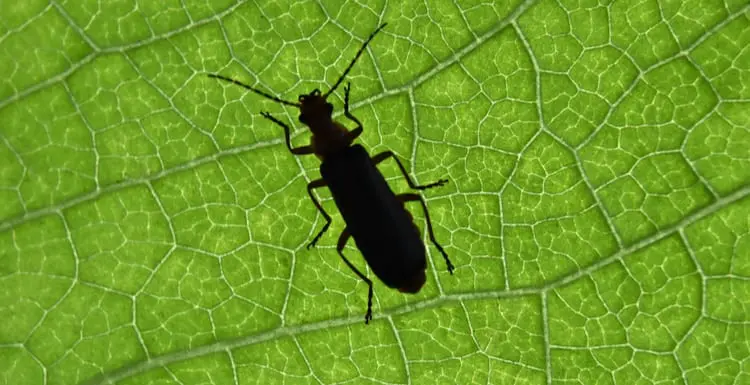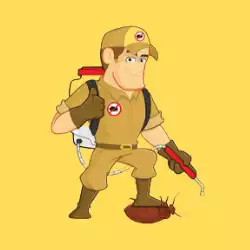Wondering how to get rid of boxelder bugs? If so, you’re in the right place.
We’ll cover home remedies, chemicals to use, and when to call a pro. Read on to learn all you need to know.
We partnered with Networx to help you find local pest control techs. Click to below to get a FREE quote.
Why Get Rid of Boxelder Bugs?
Boxelder bugs (also known as Boisea Trivittata), are red-and-black nuisances that often swarm on and around homes and vegetation. They don’t bite, carry diseases, or destroy property like some insects.
But they are annoying when they congregate, emit a bad smell when crushed, and stain items with their excrement.
Because they appear in considerable numbers and are prone to getting inside houses where it’s difficult to control them, dealing with boxelder bugs is a frustrating exercise.
However, you can take several different approaches to deal with these pests, and one or a combination of them is likely to do the trick for most homeowners.
Identifying Boxelder Bugs
Before deciding what to do about your bug population, it’s important to make sure you’re dealing with boxelder bugs. Many homeowners confuse other bugs with them.
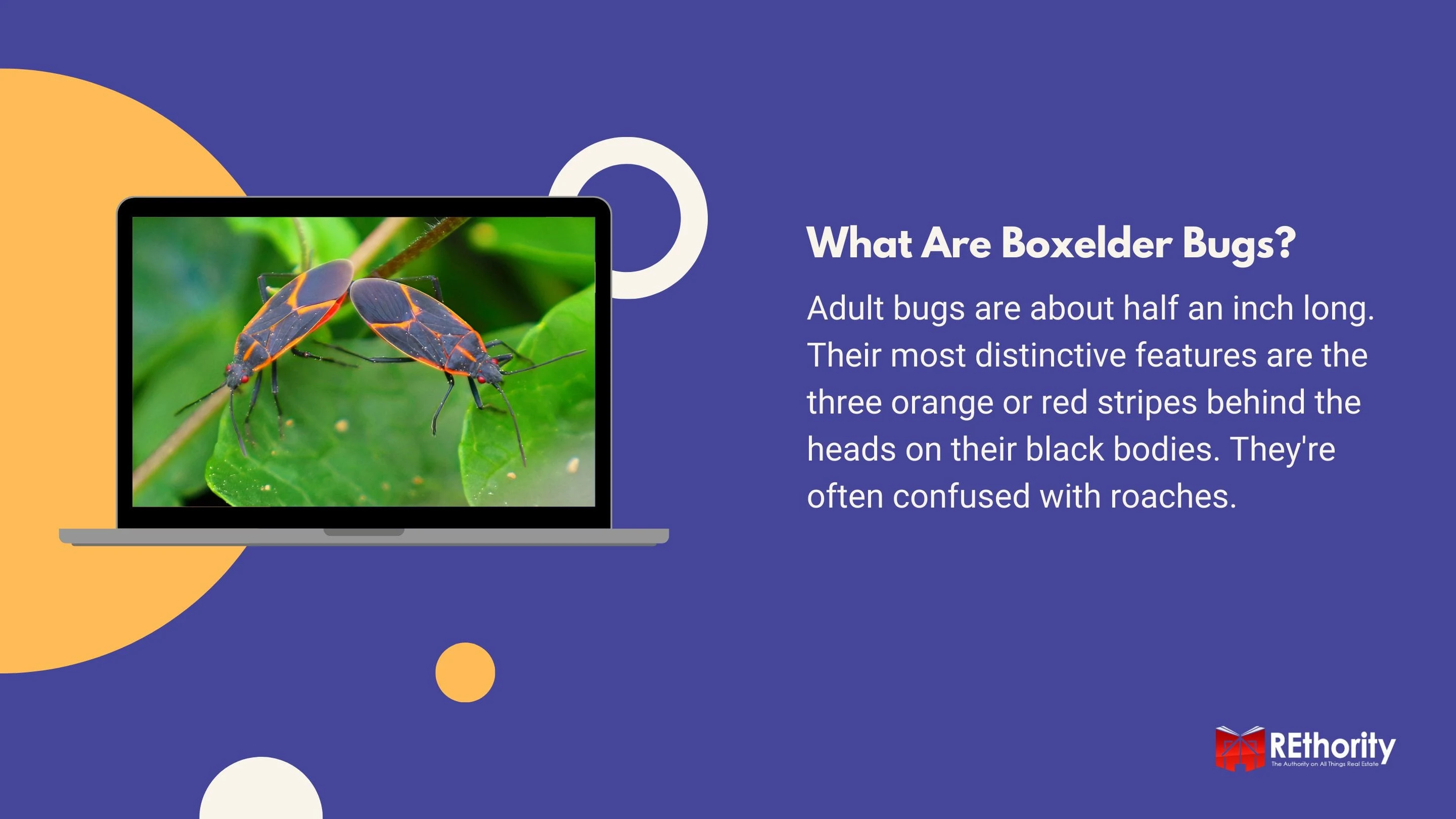
In fact, when I was managing properties, I got calls all the time because the tenant thought they had a roach infestation. At first glance, these bugs appear to be roaches. But they’re not.
In fact, the boxelder bug is straightforward to identify. The adult bugs are about half an inch long. Their most distinctive features are the three orange or red stripes behind the heads on their black bodies.
Their wings also overlap in an X shape. The young boxelder bugs, also known as nymphs, are considerably smaller, about one-sixteenth inch long.
Just after hatching, they are bright red. They adopt the red-and-black color scheme as they mature into adults.
Where to Find Boxelder Bugs
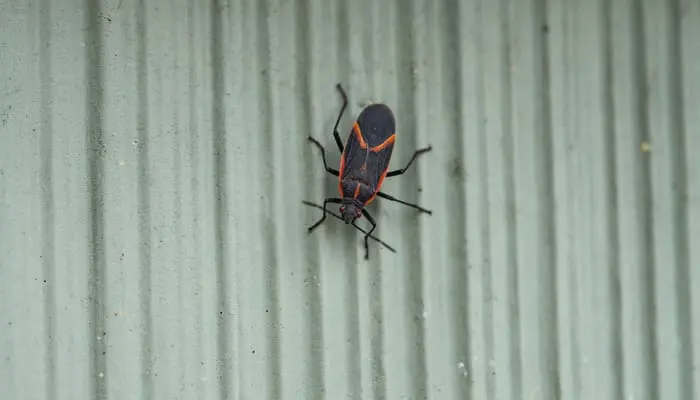
Erik Agar/Shutterstock
Boxelder bugs inhabit most of the United States from the west slope of the Rocky Mountains east to the Atlantic Ocean. They get their name from the boxelder trees where the females lay their eggs.
If you have boxelder trees, you’ll likely have boxelder bugs. The adult bugs spend the winter in sheltered spaces such as inside your home.
You are most likely to have an indoor infestation in the fall when the mature bugs are looking for a warm place to survive the cold months. In the spring, the adult bugs emerge.
And the females lay their eggs on female boxelder trees. During hot, dry summers, the bugs can be very numerous outside, congregating on buildings with significant exposure to the southern and western sun.
How to Get Rid of Boxelder Bugs
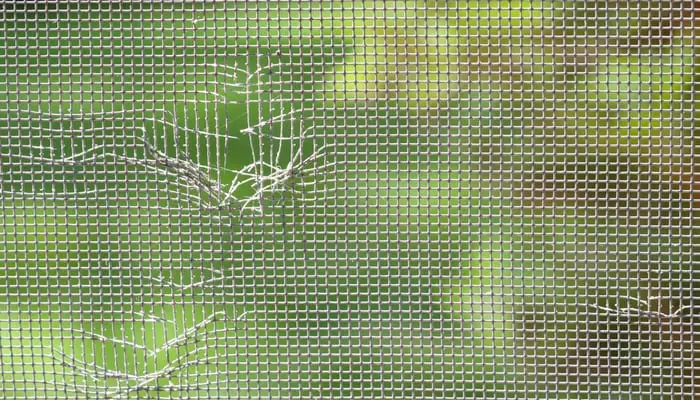
Doubletree Studio/Shutterstock
The best way to deal with boxelder bugs is to keep them from ever entering your home. You can do this by sealing any entry points.
Since the bugs are small and determined to get inside, this requires a systematic approach and some care.
Start by ensuring all screens on windows and doors are undamaged and have no holes or loose edges where boxelder bugs can enter.
Don’t neglect other screens covering openings such as bathroom fans and kitchen vents and vents in soffits and attic. Either repair or replace them to make it hard for bugs to enter.
Seal Around All Doors

Alpa Prod/Shutterstock
It’s also necessary to seal around solid doors. All exterior doors should have door sweeps to prevent bugs from crawling under them.
Make sure garage doors also have a seal along the bottom of the door. Now get out your caulking gun and seal entry points into the walls.
Do this for:
- Phone lines
- Cables
- Pipes
- Faucets
- And dryer vents
Openings around imperfectly fitting electrical outlets, switch boxes, heating ducts and return air vents also provide an easy entry for boxelder bugs, so seal them as well.
Even loose-fitting window and door frames offer these bugs a way inside. A good rule of thumb is that if you can see a crack, a boxelder bug can get through it. So it needs to be sealed.
Cleaning Up Boxelder Bugs with Soap

Chamille White/Shutterstock
Soap and water are some of the most commonly used and effective boxelder bug remedies. You can spray the bugs with a mixture of a tablespoon of ordinary dish soap in an ordinary-sized spray bottle.
It won’t necessarily kill all or even many bugs, but it does cause them to disperse. After you’ve caused the gang of bugs to go elsewhere, it’s good to clean the places they’ve been congregating.
These surfaces usually include warm, flat surfaces. And how to do this? With soapy water. This will help keep them from coming back.
Mechanical Removal
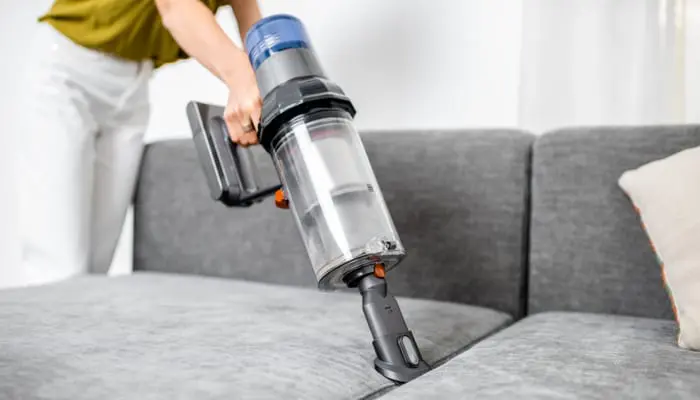
RossHelen/Shutterstock
Another good way to remove boxelder bugs is by vacuuming them up. This is preferable to crushing them because the bugs can emit a foul odor when crushed.
To keep the bugs from crawling out of the vacuum cleaner after picking them up, remove and toss the bag. After that, cleaning the area where they were gathering can help to keep them from coming back.
Boxelder Bug Insecticides

Andrey_Popov/Shutterstock
Insecticides are not quite a last resort when it comes to coping with boxelder bugs. You may want to use some chemicals to treat outdoor infestations. However, insecticide alone isn’t likely to work.
It’s more effective when used in combination with the above techniques. One problem is that once the bugs are inside, there aren’t many indoor-rated insecticides that will reliably kill them.
If you are going to use insecticides, some of the active ingredients to look for are bifenthrin, cyfluthrin, deltamethrin, lambda-cyhalothrin, and permethrin.
Spot exterior treatments, in addition to the other remedies described above, should do the trick. In the worst cases, successfully coping with boxelder bugs is, obviously, not a simple one-step matter.
It calls for several different approaches, along with a measure of persistence and care. If you’ve tried all these remedies or can’t spare the time or attention they require, it is time to call in a professional.
Commercial pest control companies have the experience, equipment, and access to effective pesticides that a bad boxelder problem calls for.
Boxelder bugs are a common problem, and any reputable company is likely to be able to help come up with a reliable plan to deal with your boxelder bug problem.
Tree Removal

Iva Villi/Shutterstock
Unfortunately, boxelder bugs come back every year. Some springs and summers are worth more than others, but none of these control techniques will permanently banish them from your property.
As a last resort, one way to significantly reduce the local population of boxelder bugs over the long haul is to remove any female boxelder trees near your home. This solution gets mixed reviews.
Some experts note that the bugs can travel up to a couple of miles so, unless you can cut down all the boxelder trees in the whole neighborhood, removing your trees is not likely to end the problem.
However, other tree-focused control methods can help. For instance, you can trim your trees regularly to cut down the feeding and egg-laying areas available to the bugs.
You can rake or mow to remove the seed pods falling from the trees. Remember, it’s only the female boxelder trees that serve as bug nurseries.
If a tree doesn’t have seed pods that look like helicopters, it’s a male tree and a non-attractant to bugs.
When to Call a Pro

Wavebreakmedia/Shutterstock
Boxelder bugs don’t like dish soap, and won’t enter your home if there aren’t gaps through which they can do so. However, sometimes it’s best to call a pest control expert.
After all, they have the knowledge, chemicals, and equipment that you may not have access to. Many of them also provide a pest-free guarantee for a set period of time.
If you want to skip the hassle of trial and error, simply click the button in the box below. The system will connect you with one or more local pros who will give you a free estimate.
We partnered with Networx to help you find local pest control techs. Click to below to get a FREE quote.
How to Get Rid of Boxelder Bugs
Still wondering how to get rid of boxelder bugs? We hope not — that means we didn’t do our job. But we understand the struggle. Boxelder bugs are hardy, annoying, and numerous.
The good news is that homeowners don’t just have to put up with them. If humans can be as hardy and employ some or all of the numerous ways to control them, they can be convinced to gather elsewhere.
Resources:

